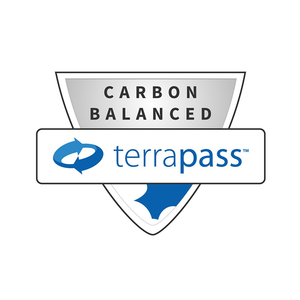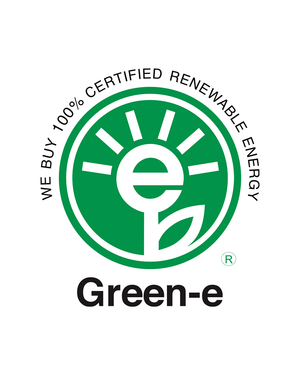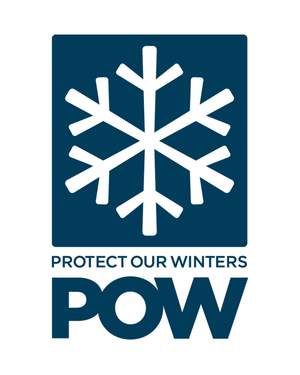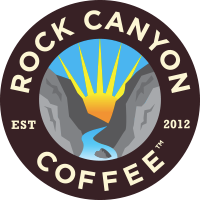Demystifying Carbon Neutrality
You may be wondering, where do we even begin? And, quite frankly, you're not alone.
Climate science can be an overwhelming and deeply complex subject to unpack.
But, we've done the legwork and are here to clue you into some of the basics so hang in there!
What are the basics?
Fortunately for eveyone, there's something called the Green House Gas Protocol that "provides standards, guidance, tools and training for business and government to measure and manage climate-warming emissions."
Now, before you fall asleep, a key takeaway to understand is that the GHGP breaks an organization's emissions into 3 categories:
Scope 1 - Direct Emissions
Scope 2 - Indirect Emissions
Scope 3 - Value Chain Emissions
With that preface, let's take each scope one-by-one and demonstrate how we've incorporated scientific consensus into climate action here at Rock Canyon.

Scope 1 - Direct Emissions: 100%
These emission are generated by sources under our immediate control.
When we fire up the roasters to spin our craft, we consume natural gas.
When we drive our little delivery van up and down the Roaring Fork Valley, you guessed it, we consume gasoline.
When it get's cold in the winter...you get the point...
Now for the good news:
100% of our Scope 1 emissions are offset via investments we make in carbon credits through Terrapass:
Their literature describes what they do best:
"Terrapass supports specific carbon offset standards, which assure transparency and quality in the creation, quantification, and verification of offset projects.
These standards require that offsets be real, additional (i.e., they wouldn’t have happened under a “business as usual” scenario), permanent, quantifiable, never double-counted or double-sold, and independently verified."
Projects that Terrapass supports to generate carbon offsets include landfill gas capture, reforestation, renewable energy builds, and industrial gas destruction.
To put a bow on it, we track and calculate our CO2e footprint (CO2e is a measure of all greenhouse gases, not just CO2)
So let's say our footprint is 20 mT CO2e - we purchase 20 mT of carbon offsets created by Terrapass supported projects.

Scope 2 - INDIRECT Emissions: 100%
These emissions are associated with our operation but generated externally - think electricity.
When we flip the lights on a dark winter morning to get the day bumping, bam!, meter is turning.
When we boot up the packaging line to weigh, fill, and seal all our tasty beans, again, bam, that meter is spinning.
Even the roaster needs its share of electricity to spin the drum, pull air through the system, etc.
Again, for the good news:
100% of our Scope 2 emissions are offset via Green-e Certified Renewable Energy Certificates (REC).
Obvious follow up: what the heck is a REC?
Well, it's effectively a tag that represents 1 megawatt hour (1000 kilowatt hours) of electricty generated from renewable sources (wind, solar).
So, let's say we consume 15 MwH of electricity in a given year. We would purchase and retire 15 RECs to offset.
REC programs effectively incentivize the profileration of new renewable energy projects to replace fossil fuel sources.
So that's what we do, and we're really proud of it!

SCOPE 3 - ValUE CHAIN EMissions: Well, It's Complicated
These emissions are outside of our immediate control, but are considered to be in our value chain.
Think of these as the Scope 1 & 2 emissions of organizations we work with to make our business run (like the farms that grow our beans, our importers, freight companies, etc.)
This creates a lovely and ambiguous gray area, because there's no clear way to definitively quantify and allocate the portion of their emissions that pertains to us.
Let's say you a bought tub of ice cream (mint chip maybe? yum) and someone asked, "hey, what portion of the electricity consumed by the freezer at the grocery store is associated with your pint of ice cream?"
There's an incredible TED Radio Hour episode that tangentially gets to the core to this issue: A.J. Jacobs: What's The Power Of A Simple Thank-You?
Author A.J. Jacobs carries out a social experiment in what he calls the "Gratitude Chain" in which he attempts to thank every person that had any role, no matter how small, in facilitating his morning cup of coffee.
He ends up thanking over 1,000 people.
When we apply that paradigm to the idea of Scope 3 emissions, our view is that effective climate management requires the partipation of every company in every value chain to take responsiblity over their Scope 1 and 2 emissions.
So our "Scope 3" policy is one of supporting global climate advocacy to that end.
We contribute proceeds from our operations to organizations like Protect Our Winters in Boulder, Colorado - POW helps passionate outdoor people protect the places we live and lifestyles we love from climate change.
We've decided it's more important to allocate funds to organizations laying the groundwork for broader change than to allocate that same money to "offset" the emissions of companies in our value chain by guesswork.
We're motivated by real change, not just marketable change - so we hope our position will motivate others companies to follow suit:
1. offset what is quantifiably theirs
2. advocate for others to do the same
Go Planet Earth!
I know, that was a lot
but now you know! :)
might as well buy some sustainable coffee to commemorate your efforts!
